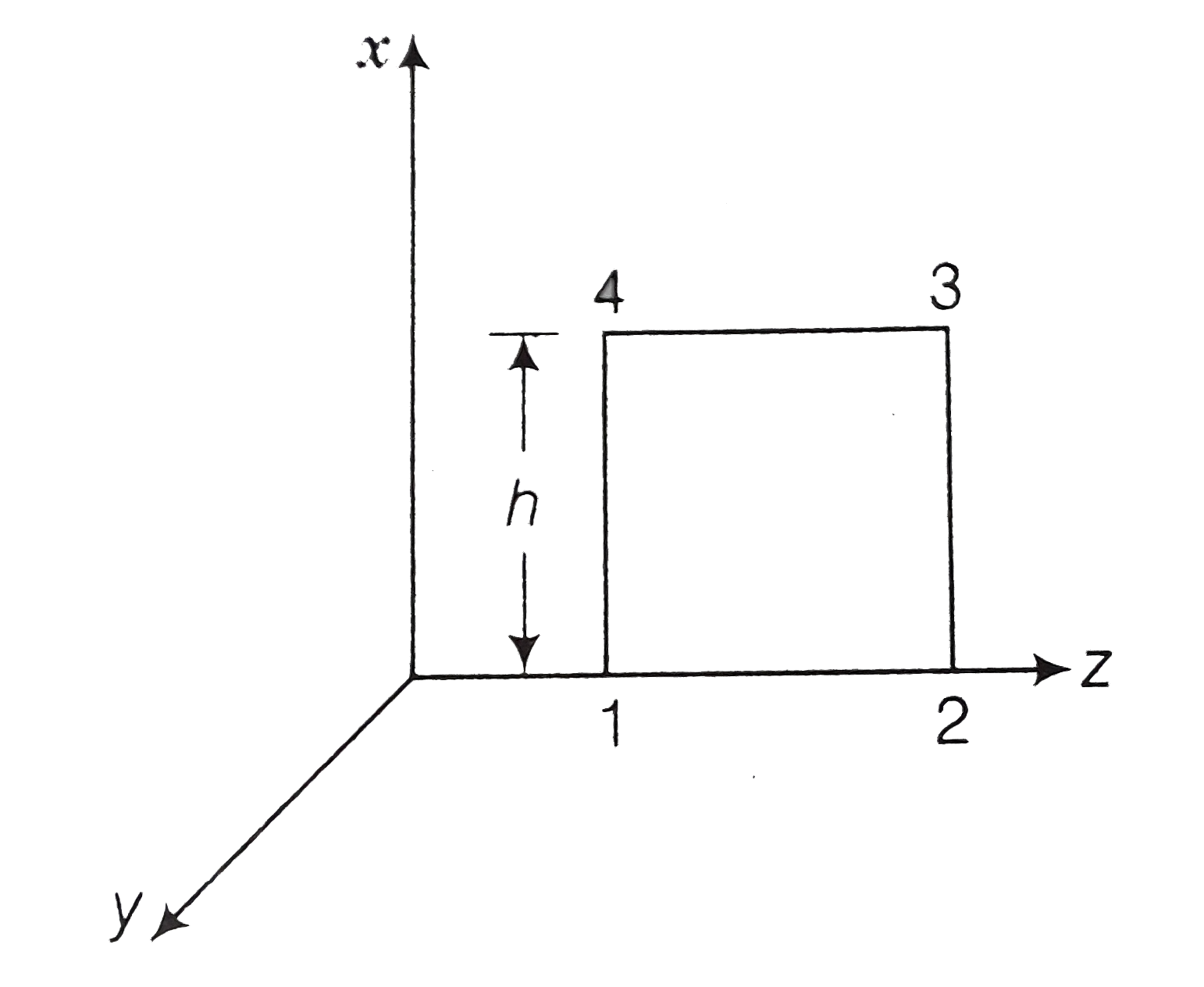An em wave going through vacuum is described by E=E0sin(kx−ωt)
B=B0sin(kx−ωt)
E0B0=k
E0ω=B0k
E0k=B0ω
None of these
The correct Answer is:c
Suppose a plane em wave is
propagating along x-axis. Cosider a rectangular
path ABCD in x-y plane, fig. The electric
field →E is parallel to the y-axis and magnetic field
→B is parallel to z-axis.

Here, ∮→E.→dl=∫ba→E→dl+∫cb→E→dl
+∫dc→E→dl+∫ad→E→dl
=0+Ex2l+0Ex1(−l)
=E0l[sin(kx2−ωt)−sin(kx1−ωt)].......(i)
Magnetic flux linked with rectangle abcd will be
ϕB=∫dϕB=∫x2x1Bxldx
=∫x2x1B0[sin(kx−ωt)]ldx
=B0lk[cos(kx2−ωt)−cos(kx1−ωt)]
∴dϕBdt=−B0Ik
x[−sin(kx2−ωt)(−ω)+sin(kx1−ωt)(−ω)]
=−B0lωk[sin(kx2−ωt)−sin(kx1−ωt)]......(ii)
Using Faraday's law of electromagnetic induction,
we have ∮→E.→dl=−dϕBdt
Putting the values from (i) and (ii), we get
E0=B0ω/korkE0=B0ω
Topper's Solved these Questions
- ELECTROMAGNETIC WAVESBook:PRADEEPChapter:ELECTROMAGNETIC WAVESExercise:(C) Problems for practice
Explore 1 Video
- ELECTROMAGNETIC WAVESBook:PRADEEPChapter:ELECTROMAGNETIC WAVESExercise:Multiple choice questions
Explore 1 Video
- ELECTROMAGNETIC WAVESBook:PRADEEPChapter:ELECTROMAGNETIC WAVESExercise:Value based questions
Explore 5 Videos
- ELECTROMAGNETIC INDUCTION & ALTERNATING CURRENTBook:PRADEEPChapter:ELECTROMAGNETIC INDUCTION & ALTERNATING CURRENTExercise:Multiple Choice Questions
Explore 1 Video
- ELECTRONIC DEVICESBook:PRADEEPChapter:ELECTRONIC DEVICESExercise:Fill in the Blanks
Explore 1 Video
Similar Questions
A plane EM wave travelling along z direction is described by
E=E0sin(kz−ωt)ˆiandB=B0sin(kz−ωt)ˆj.
show that
(i) The average energy density of the wave is given by uav=14ε0E20+14B20μ0.
(ii) The time averaged intensity of the wave is given by Iav=12cε0E20.
View SolutionThe electric field of an electromagnetic wave travelling through vaccum is given by the equation E=E0sin(kx−ωt) The quantity that is independent of wavelength is
View Solution
Knowledge Check
An electromagnetic wave going through vacuum is described by
E=E0sin(kx−ωt),B=B0sin(kx−ωt).
ThenA(E0)k=(B0)ωB(E0)(B0)=ωkC(E0)ω=B0kDnone of these .An electromagnetic wave going through vacuum is described by →E=E0sin(kx−wt)and→B=B0sin(kx−wt). Which of the following equation is true?
AE0k=B0ωBE0ω=B0kCE0B0=ωkDE0ωk=B0An em wave going through vacuum is described by E=E0sin(kx−ωt)
B=B0sin(kx−ωt)AEok=B0ωBE0B0=ωkCE0ω=B0kDE0B0=ωk
A plane EM wave travelling in vacuum along z-direction is given by E=E0 sin (kz−ωt)ˆi and B=B0 sin (kz−ωt)ˆj
(i) Evaluate ∫E.dl over the rectangular loop 1234 shown in figure.
(ii) Evaluate ∫B.ds over the surface bounded by loop 1234.
(iii) Use equation ∫E.dl=−dϕBdt to prove E0B0=c.
(iv) By using similar proces and the equation
∫B.dl=μ0I+ε0dϕEdt, prove that c1√μ0ε0

View SolutionAn electromagnetic wave going through vacuum is described by
E= E_0 sin(kx- omega t). Which of the following is/are independent of the wavelength?
View SolutionAn e.m. wave going through vacuum is denoted by E=E0sin(kx−ωt). Which of the following is /are independent of wavelength?
View SolutionA electromagnetic wave going through a medium is given by E=E0sin(kx–ωt)andB=B0sin(kx–ωt) then
View SolutionAn electromagneti wave propagationg through vacuum is given B=B0sin(kx−ω) . Which of the following is/are independent of frequency?
View Solution

